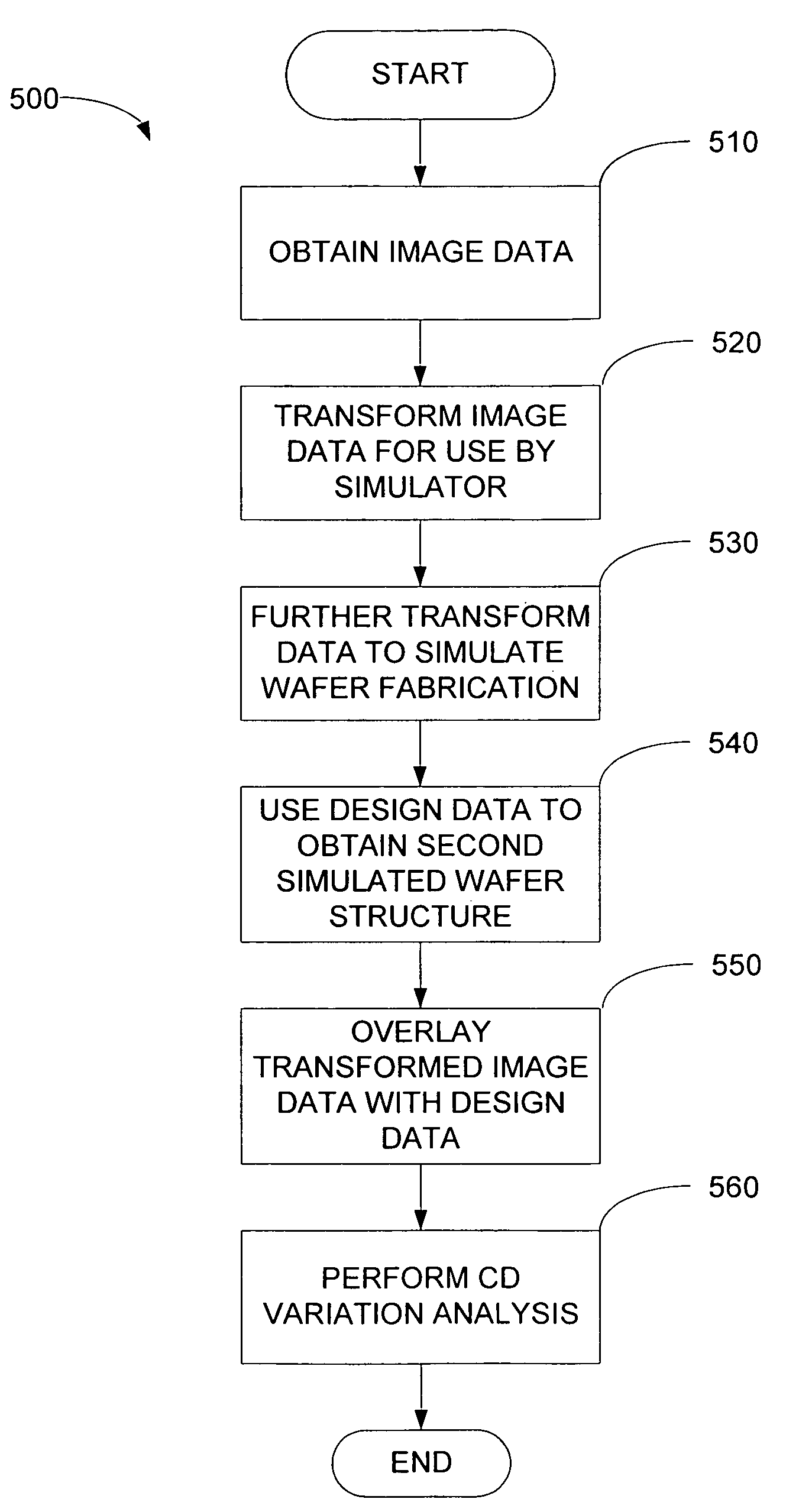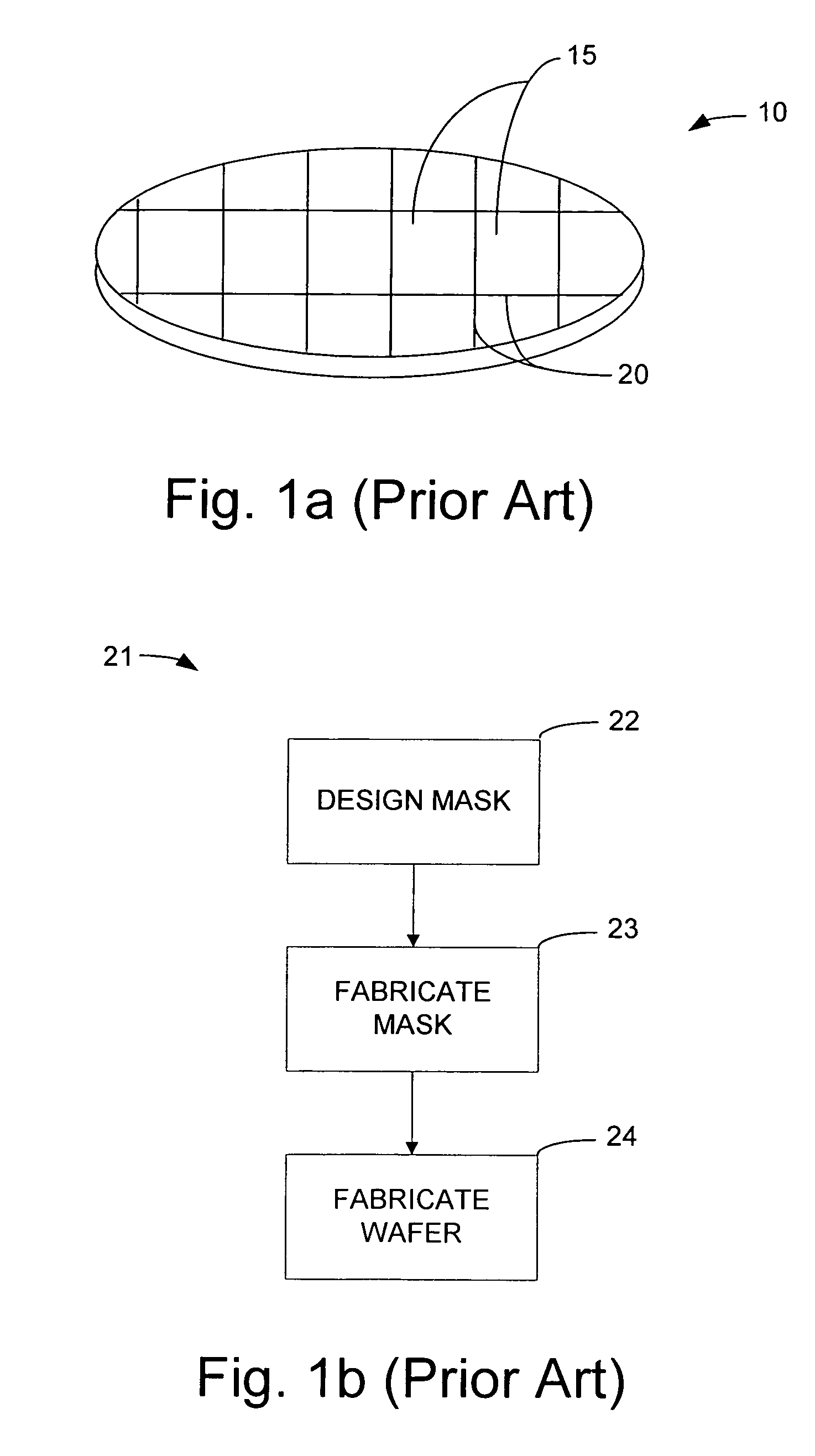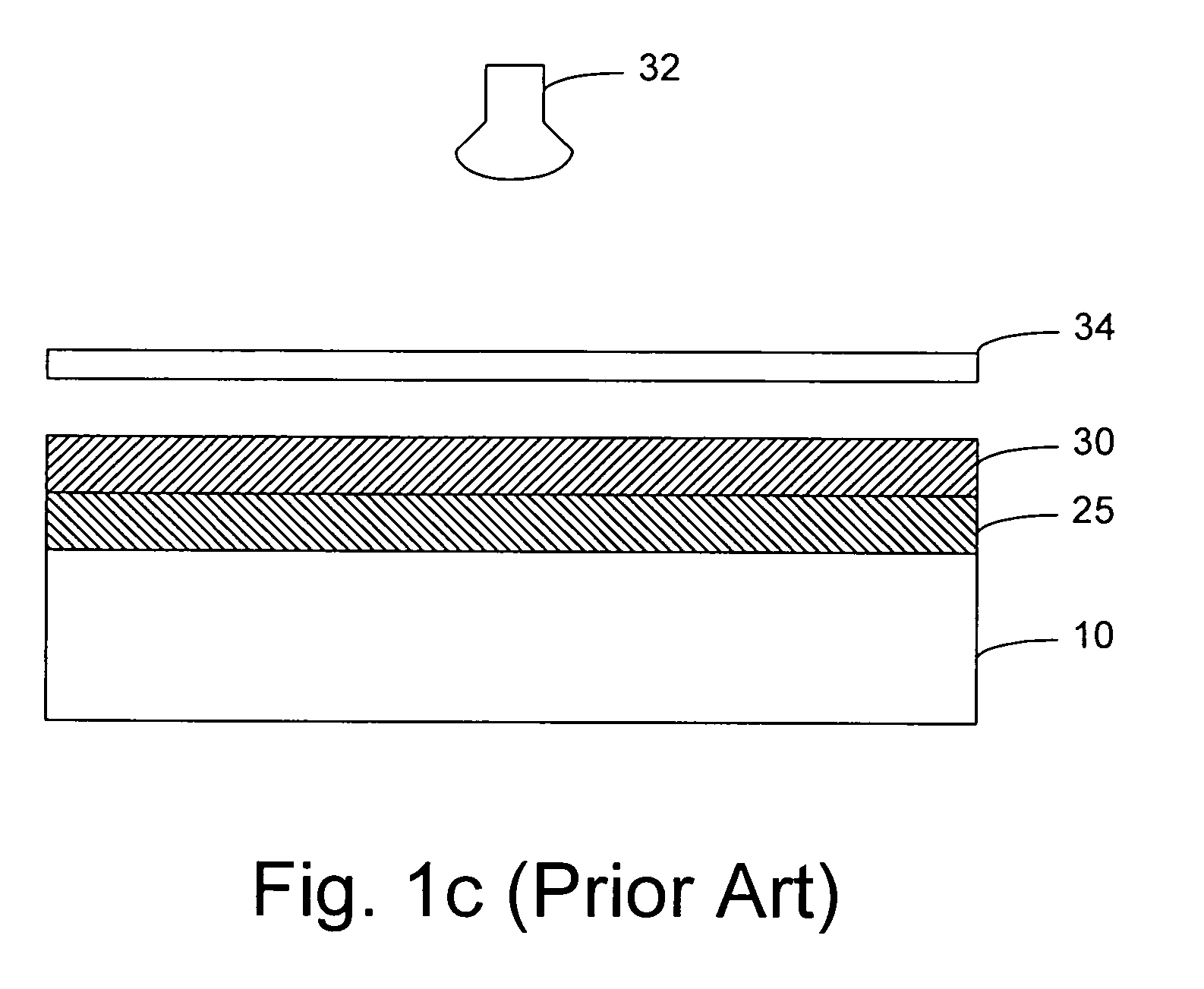Method for evaluation of reticle image using aerial image simulator
a technology of aerial image and simulation, applied in the field of semiconductor wafer manufacturing, can solve the problems of inability to fully understand the precise nature of cd variations in each structure, inability to control the critical dimensions (cds) of features formed on a semiconductor wafer, and inability to obtain the full extent of cd variations information
- Summary
- Abstract
- Description
- Claims
- Application Information
AI Technical Summary
Benefits of technology
Problems solved by technology
Method used
Image
Examples
Embodiment Construction
[0036]Referring to FIG. 3, an overview of a pattern analysis and simulation system 100 in accordance with the present embodiment of the invention is depicted. The system 100 includes an imaging device 105 for imaging a mask 107 having a plurality of structures or features 109 (a “pattern”) formed thereon, a viewing station 110, a lithography process simulator 115, and a server 120. A network connection 125 such as a local area network couples together the imaging device 105, the viewing station 110, and / or the simulator 115, to allow data to be communicated therebetween. The server 120 facilitates data communication across the network connection 125 in a conventional manner. It will be appreciated, however, that alternatively the imaging device 105, the viewing station 110, and / or the simulator 115 may not be connected via the network connection 125. In such a case, data may be transferred between the imaging device 105, the viewing station 110, and / or the simulator 115, via a disk ...
PUM
| Property | Measurement | Unit |
|---|---|---|
| diameter | aaaaa | aaaaa |
| critical dimension | aaaaa | aaaaa |
| scanning electron microscope | aaaaa | aaaaa |
Abstract
Description
Claims
Application Information
 Login to View More
Login to View More - Generate Ideas
- Intellectual Property
- Life Sciences
- Materials
- Tech Scout
- Unparalleled Data Quality
- Higher Quality Content
- 60% Fewer Hallucinations
Browse by: Latest US Patents, China's latest patents, Technical Efficacy Thesaurus, Application Domain, Technology Topic, Popular Technical Reports.
© 2025 PatSnap. All rights reserved.Legal|Privacy policy|Modern Slavery Act Transparency Statement|Sitemap|About US| Contact US: help@patsnap.com



